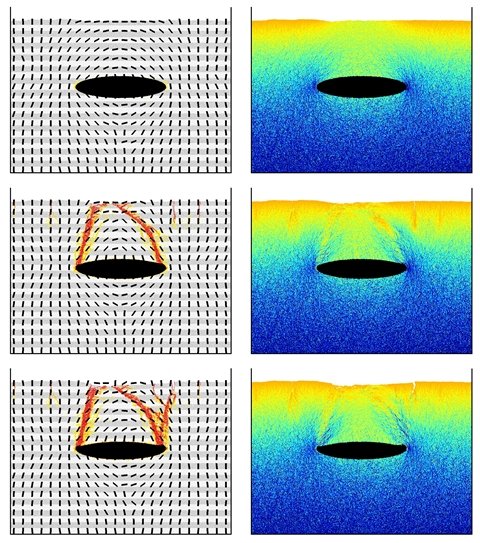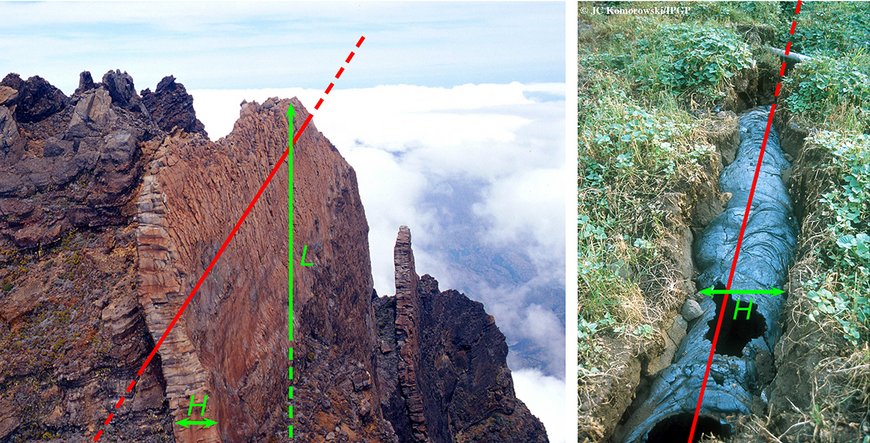As magma is withdrawn and erupted from a magma chamber, the overlying rocks can become unstable and collapse into it. This produces a large surface depression termed a caldera. The nature of the fracture systems facilitating this collapse and of the stress conditions that generate them are subject of long-running debate. We characterised the evolution of stress around a depleting magma chamber as its roof collapses with a novel two-dimensional Distinct Element Method modelling approach. These models illustrate how principal stress directions rotate during progressive deformation so that roof fracturing transitions from initial reverse faulting to later normal faulting. They also reveal four end-member stress paths to fracture, each corresponding to a particular location within the roof. Analysis of these paths indicates that fractures associated with ultimate roof failure initiate in compression (i.e. as shear fractures). We also report on how failure of the roof affects pressure conditions in the underlying magma chamber. Many of these findings should be transferable to other gravity-driven collapse processes, such as sinkhole formation, mine collapse and subsidence above hydrocarbon reservoirs.
Earth. Planet. Sci. Lett. 421:139-151. | DOI:10.1016/j.epsl.2015.03.003 |
A review of mechanical models of dike propagation: Schools of thought, results and future directions.
Rivaita, E., Taisne, B., Bunger, A. P., Katz, R. F. (2015)
Diking plays a key role in transporting magma through the crust and for tectonic phenomena such as continental rifting and plate divergence at mid-ocean ridges. The physics of diking is very complex and existing models of propagating dikes are still relatively rudimentary: they are mainly 2D, and generally include only a subset of the relevant factors. Here, recent numerical models on dike propagation are reviewed and critically compared. Two main philosophies are presented, one in which fluid dynamics is taken to control the behavior and the other which focuses on rock fracturing. Moreover, promising directions of research are presented, that include emerging approaches to numerical modeling and insights from hydraulic fracturing as an industrial analog. The paper also includes a review on the main results obtained in the last 15-20 years by means of mechanical modeling of dikes.
Tectonophysics, 638, p. 1-42. | doi: 10.1016/j.tecto.2014.10.003| pdf |
Discrimination between induced, triggered, and natural earthquakes close to hydrocarbon reservoirs: A probabilistic approach based on the modeling of depletion-induced stress changes and seismological source parameters.
Dahm, T., Cesca, S.f Hainzl, S., Braun, T., Krüger, F. (2015):
We introduce a novel probabilistic discrimination for induced, triggered, and natural earthquakes, which is based on Coulomb stress calculations and the laboratory-derived frictional response of faults. The approach is demonstrated for earthquakes in Germany, North Sea and Italy.
JGR, 120, 4, p. 2491-2509.| doi.org/10.1002/2014JB011778 |



